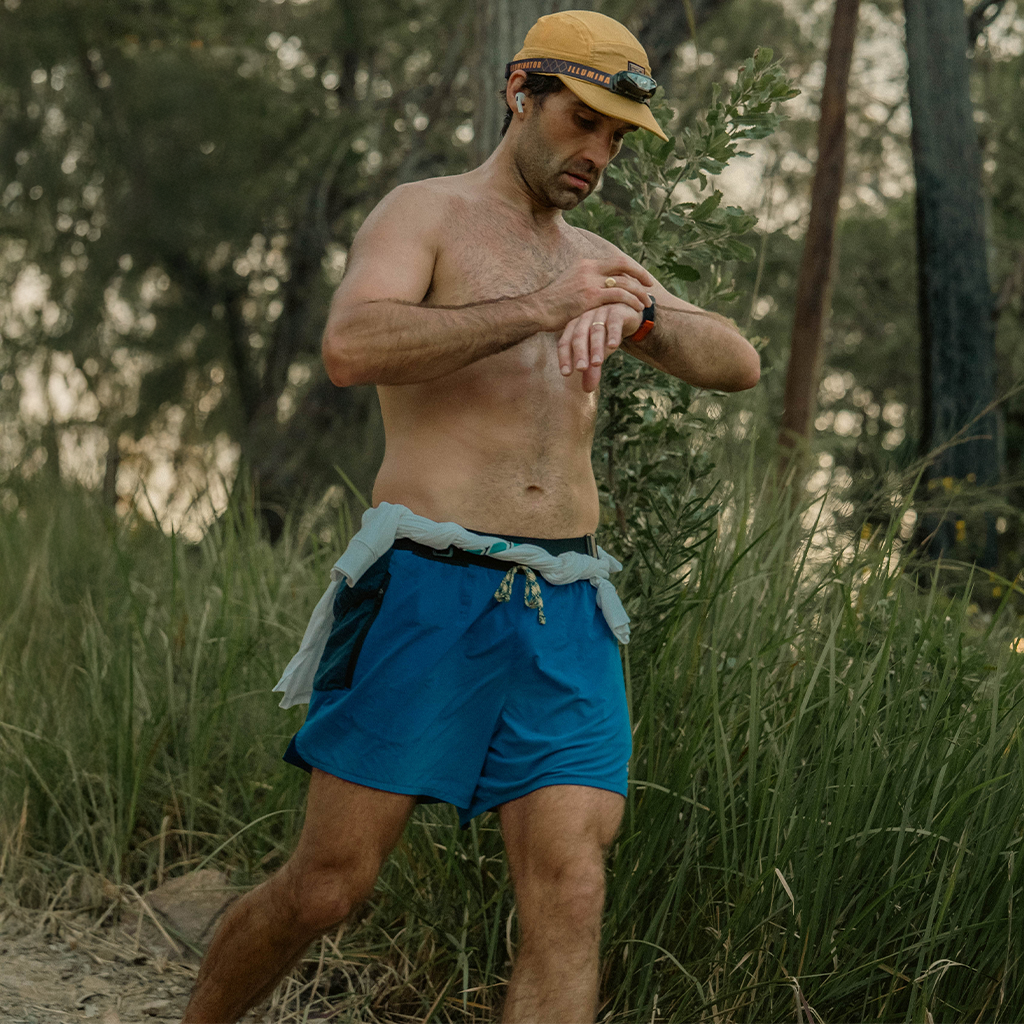
THE BEST WAY TO SET UP YOUR WATCH
FOR SYDNEY’S BACKYARD ULTRA
When preparing for Sydney’s Backyard Ultra, one of the most important tools you’ll have on race day is your watch. How you set it up and use it during the event can make a huge difference in tracking your performance and pacing yourself correctly. Here’s a guide to setting up your watch and using it to its full potential during the race.
TURN OFF AUTOLAP
Before the race, the first thing you should do is turn off the autolap feature on your watch. In most cases, your watch will be set to automatically record a lap every 1 km or mile. This setting isn’t helpful for a Backyard Ultra and could even disrupt your tracking during the event.
Why turn off autolap? In a Backyard Ultra, the event is broken into multiple “yards,” each one covering exactly 6.706 km. Autolap will buzz each time you cover a set distance (like 1 km), which isn’t useful when the focus is on completing yards rather than tracking short distances.
How to turn it off: Go into your watch’s settings, find the autolap feature, and disable it. This will allow you to manually control when a lap is recorded, which is critical for accurate tracking.
Also, be careful not to disable the manual lap button feature on your Garmin or other watches. This function is essential to mark each yard and track your progress accurately.
With autolap off and the manual lap button enabled, your watch will run continuously, allowing you to focus on completing each yard and giving you control over when the laps are logged.
RECOMMENDED DATA FIELDS FOR YOUR WATCH FACE
To make sure you’re getting the most useful information during the race, we recommend setting up your watch face with the following data fields:
Current Pace: This shows your pace at any given moment, allowing you to adjust in real time. Comparing your current pace with your lap average pace will help you ensure that you’re running fast or slow enough to complete the yard within your goal time.
Timer: The timer tracks the total elapsed time of your race. It can also act as a lap counter—for example, if you’ve been running for 18 hours, you’ll know you’re on yard 19.
Lap Pace: This shows your average pace for the current yard. This field is extremely useful, especially if you’re varying your pace between walking and running. If you start the yard walking, lap pace will help you figure out how fast you need to run to finish on time.
Lap Distance: Rather than worrying about the total distance of the race, it’s more important to focus on the distance of the current yard. Lap distance gives you a clear idea of how far you’ve gone in the current yard and how much further you need to go to complete it.
Heart Rate (Optional): For runners who like to monitor their effort, heart rate is a helpful indicator of how hard you’re working. It’s not essential for everyone, but it can be useful if you’re keeping an eye on your exertion levels. Just remember that wrist-based heart rate monitors can sometimes be inaccurate, especially compared to chest & arm straps.
HOW TO USE YOUR WATCH DURING THE EVENT
Once your watch is set up, here’s how to use it during Sydney’s Backyard Ultra to get the most accurate data:
Starting the Race: When the first yard begins, simply press the start button on your watch. The timer will begin running, and your watch will continuously track all the data fields.
After Finishing a Yard: Once you finish a yard, press the lap button again. This will log the data for that yard (time, distance, average pace)
Starting the next yard: When the next yard begins, press the lap button again to start tracking the new yard.
Repeat this process for each yard. Your watch will alternate between:
Lap = Yard (6.706 km)
Lap = Break (the time between yards)
Lap = Yard (6.706 km)
Lap = Break (the time between yards)
This cycle continues for each yard.
Note: Never Pause Your Watch - it’s important that you never pause your watch during the race. Keeping it running ensures continuous and accurate tracking, preventing any disruption in your data. Pausing or stopping the watch could lead to confusion in pacing and data fields. Plus what if you forget to unpause your watch?
SYDNEY'S BACKYARD ULTRA POST-RACE ANALYSIS
After completing Sydney’s Backyard Ultra, reviewing your race data can provide valuable insights. Here's a quick breakdown:
Yard Pace Consistency: Check if your pace remained steady or fluctuated throughout the event.
Break Duration: Look at the duration of your breaks between yards to understand how they changed as the race progressed.
Heart Rate: Review your heart rate data to assess how hard you were working during both yards and breaks. Consistent or changing heart rates provide useful feedback.
Total Time and Distance: Check the total number of yards completed and your overall time in the event to evaluate your performance.
Efficiency Between Yards: Examine how quickly you transitioned between yards by reviewing the time spent during breaks.
These insights can help you better understand your race strategy and performance.
KEY TAKEAWAYS
Turn off autolap to avoid distractions and ensure you’re manually controlling when a lap is recorded.
Don’t disable the lap button as it’s crucial for manually marking each yard.
Never pause your watch during the race to maintain accurate and continuous tracking.
Use manual lap control to record each yard’s data, so you can track your progress precisely yard by yard.
With these settings, your watch can be a great tool for pacing, tracking, and managing your race. Good luck, and we’ll see you at Sydney’s Backyard Ultra!







